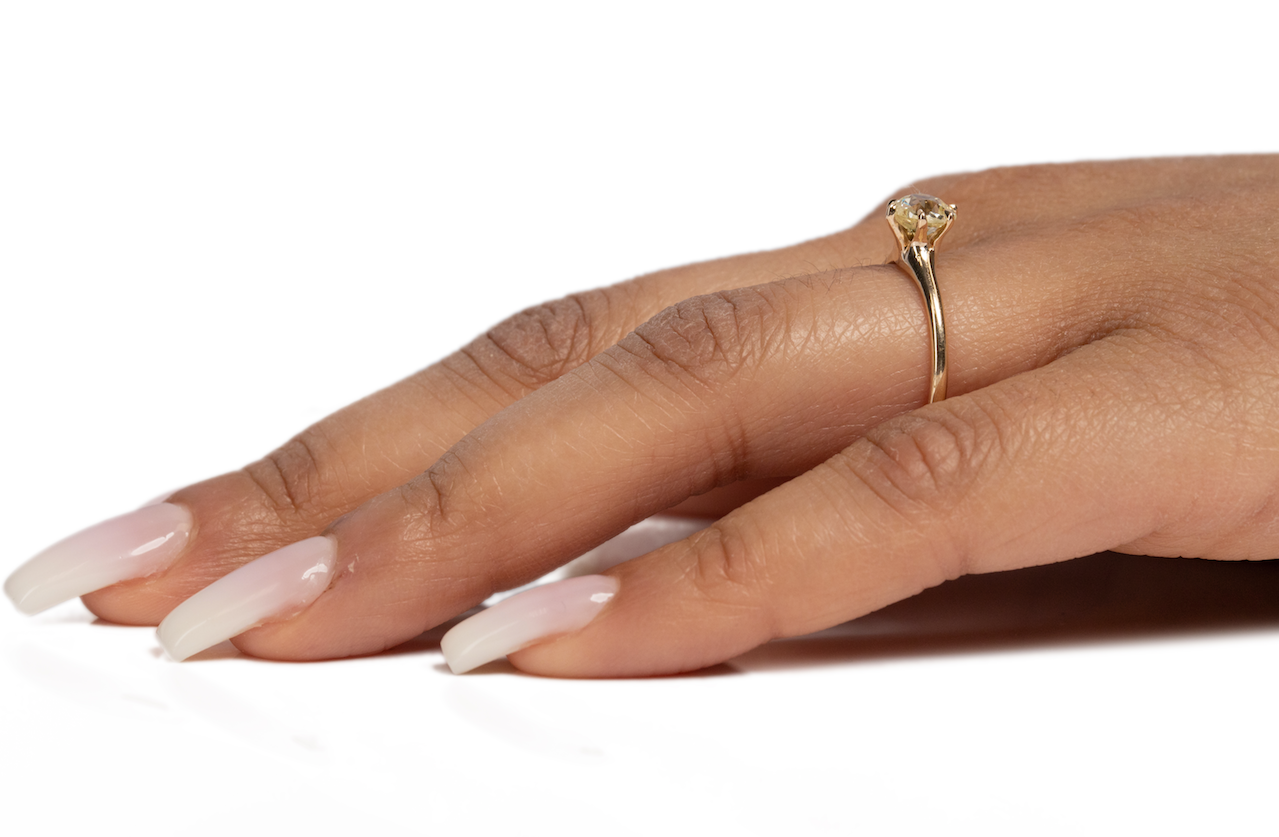The Verma Group
Norco
Norco
Couldn't load pickup availability
Circa 1900s Edwardian 14K Yellow Gold GIA Certified .85ct Antique Cushion Diamond Engagement Ring - VEG#1594
Item Details:
Ring Size: 6
Metal Type: 14k Yellow Gold [Hallmarked, and Tested]
Weight: 2.2 grams
Center Diamond Details:
GIA REPORT #: 2203841479
Weight: .85ct
Cut: Antique Cushion
Color: Light Yellow (Y-Z)
Clarity: SI1
Measurements: 6.12mm x 5.28mm x 3.57mm
Finger to Top of Stone Measurement: 5.5mm
Condition: Excellent
Edwardian Era:
Time Period: Edwardian rings were crafted during the brief reign of King Edward VII which lasted from 1901 to 1910. Edwardian era jewelry is categorized by a delicate elegance and light airy feeling which seemed to capture the carefree attitudes of the day.
Description of Era: It was during this time that the famous filigree ring made its entrance, and today an authentic antique filigree ring is very sought after.
Designs of the Edwardian era were influenced by the styles from the Late-Victorian Age. During this time, jewelry became more refined. Diamonds and colorful gemstones were popular and advancements in setting and cuts of the stones continued. Throughout this era of peacetime the arts thrived and this time became known as "The Beautiful Age" which inspired new jewelry styles.
The introduction of filigree paired with beautiful center stones including diamonds, pearls or colorful gemstones display the elegance and delicacy of the time.
Flower-like themes in jewelry became quite popular too due to Queen Alexandra's love and appreciation of flowers. Pearls were featured prominently in Edwardian jewelry as well, in part from the heavy use of freshwater pearls during the late 1800s by Tiffany & Co.
Some designs and motifs of the Edwardian era reflected the influence of Art Nouveau's circular lines and swirls, and others had more geometric styles. Popular patterns and style effects for jewelry included bows and ribbons, moon and stars, flowers, garlands, leaves, shamrocks, scrolls and hearts.
In this era platinum became widely available not only for gemstone or diamond settings but for the entire piece of jewelry. More unique cuts of diamonds became widely available during the Edwardian era including the baguette, trapeze, and triangular cut. Although platinum was a favorite Edwardian age metal, multicolored gold was quite popular too including rose gold. White gold began to make an appearance and 18k yellow gold was used often in luxury pieces. Silver was also frequently employed for crafting rings as well.
Gemstones and diamonds were frequently set with "claw" prongs and deep bezel settings plus the new "knife edge setting" which created a suspended in the air effect for diamonds.
Share
















